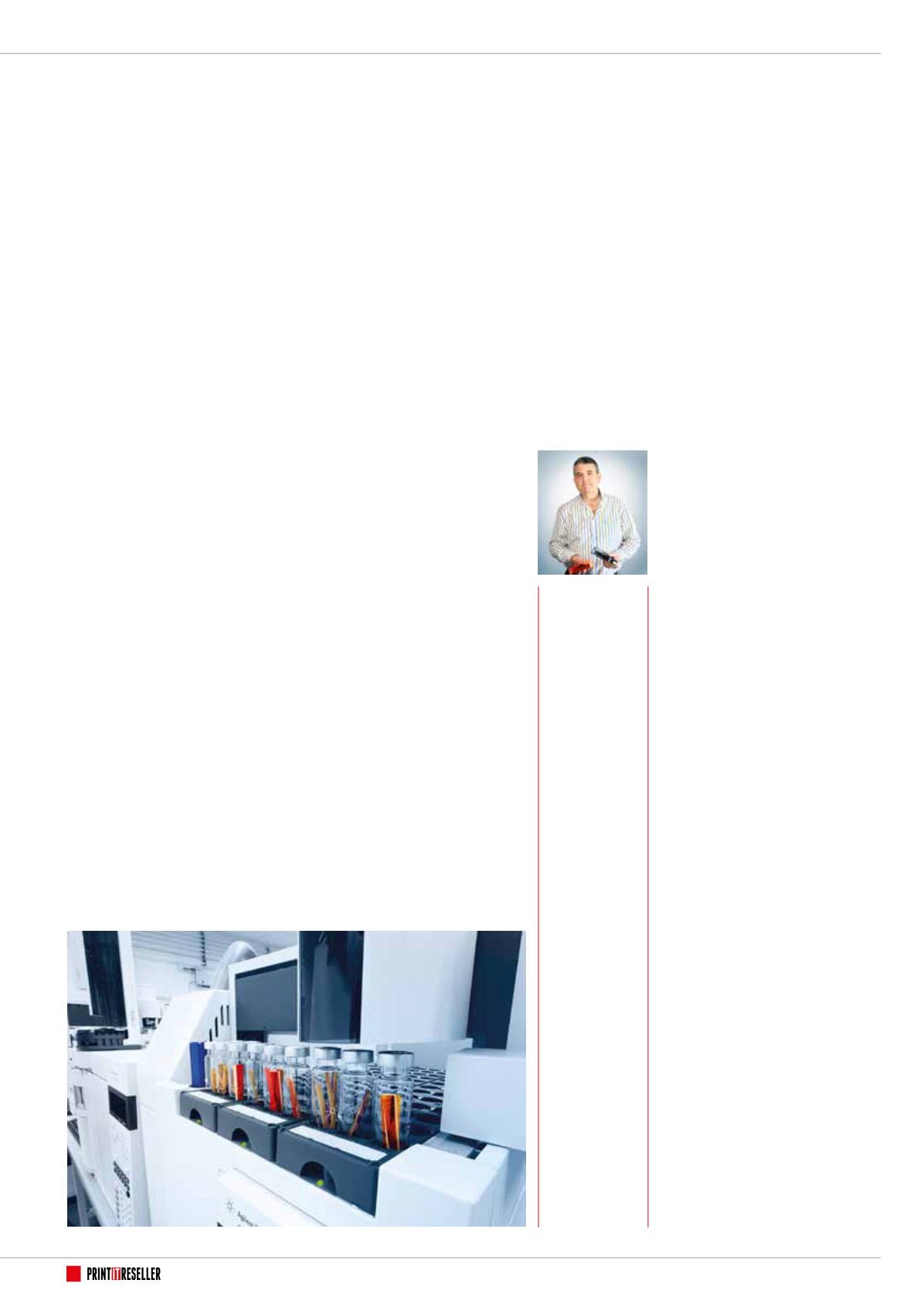
01732 759725
DRUPA PREVIEW
42
Sean Smyth
Continued...
Parents know this refrain well – “Are
we there yet?” – just as they know
the answer – “In a little while.” I
spend my working life with printing
technology and have heard this for
many years. In the case of inkjet, this
is a recurring theme. And while we are
not there yet, we are getting there.
Some print providers have arrived, such
as REAL Digital International based in
South London. It was established in 2004
in the belief that transactional and direct
mail production could be improved using
a flexible inkjet solution with powerful
workflow and finishing systems to cut, fold,
collate and insert almost anything.
REAL Digital invented 650mm wide,
high quality, colour duplex web inkjet
printing by mounting a pair of single-
pass inkjet presses on a flexible transport
system. And they developed new paper
coatings to achieve the quality demanded
by leading brands for personalised carriers,
mailers and magazines.
The business, which has since upgraded
to a pair of Screen Jet520 duplex lines,
has lived up to its promise, winning
multiple awards – including the
PrintWeek
Company of the Year – and continuing
to monitor new developments and
opportunities.
David Laybourne, REAL Digital
International Managing Director, said:
“Inkjet technology provided the flexibility
for us to deliver solutions that address
latent customer demand and to drive new
demand in areas where we have seen
further opportunities.”
He adds that developments in ink
technology are having a big effect. “Inks
are more flexible with increased colour
gamut, reducing the need for special
substrates whilst increasing productivity.
As the ink manufacturers accept more
viable pricing models, the proportion of the
marketplace that inkjet solutions are able
to address will only increase," he said.
Viable ink costs
Laybourne’s comments about ink pricing
are instructive. Suppliers want to maximise
profit. Yet, the cost of ink makes medium-
to-long runs with high ink coverage
uneconomic, compared to analogue print.
In the second in a series of articles we are publishing in the run-up to drupa
2016, Sean Smyth examines the impact inkjet technology is having on
commercial printing; what its applications are; and what the printing community
can expect to see when it converges on Düsseldorf for drupa 2016.
Flexibility.
Agility. Power.
This disconnect is holding back adoption
of inkjet in commercial print, publishing
and packaging applications, and turning
existing users of analogue presses away
from inkjet.
High value recurring consumables and
service revenue from ink, cleaning fluids
and replacement heads is attractive to
suppliers. But print service providers are
not used to this model. They are used to
buying a litho press and then negotiating
for plates, inks and support from the
established supply base.
Another historical barrier to wider
adoption of inkjet, especially for
commercial printing applications, is the
need to use specially treated papers and
the inability to print effectively on glossy
coated stocks. However, as Peter Wolff,
Director of Commercial Printing Group
for Canon EMEA, points out, the latest
generation of production inkjet presses is
rapidly eroding these barriers.
“With the latest system introductions
of the ImageStream, the reachable range
of applications extends even further, due
to the printability of offset coated material
for matte, silk and glossy applications.
With these new capabilities, additional
applications like magazine printing,
catalogue printing and others are now
do-able on inkjet, with all the benefits of
individualisation and customer-targeted
content and without the additional cost
related to special inkjet-treated papers. This
offers commercial printers the opportunity
to combine a broad range of applications
on one digital press with productivity and
quality equivalent to offset,” he said.
Books lead the way
The costing of inkjet production is different
to that of analogue print. It has lower
pre-press and set-up costs, but ink – and
until recently, paper – is more expensive,
often much more expensive. This means
long run, high ink coverage inkjet is not
cost-effective, so there is little appetite for
printers to change.
However, in book production there
are advantages in combining inkjet with
As the ink
manufacturers
accept more
viable pricing
models, the
proportion
of the
marketplace
that inkjet
solutions
are able to
address will
only increase


